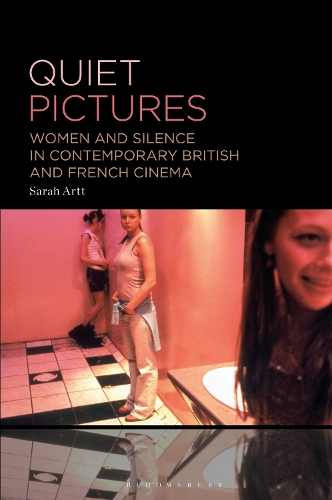
Quiet Pictures: Women and Silence in Contemporary British and French Cinema
(Paperback)
Available Formats
Publishing Details
Quiet Pictures: Women and Silence in Contemporary British and French Cinema
By (Author) Dr. Sarah Artt
Bloomsbury Publishing USA
Bloomsbury Publishing USA
27th November 2025
United States
Classifications
Tertiary Education
Non Fiction
Film history, theory or criticism
Gender studies: women and girls
Films, cinema
Television
791.436115
Physical Properties
Paperback
184
Width 152mm, Height 229mm
Description
Quiet Pictures approaches the films of Joanna Hogg, Lynne Ramsay, Cline Sciamma, and Lucile Hadhalilovicthrough the lens of silence as a motif and texture.
This book takes up the question of different uses of silence in the work of these directors and how this creates a space for foregrounding innovative practices that establish new ways of looking, staring, and gazing. Sarah Artt discusses how the deliberate deployment of silence creates space for the formation of reciprocal gazes that counteract the typically gendered and binary ways in which women and femme-presenting people tend to be portrayed on screen. Quiet Pictures draws on the political legacy of feminist film theory to explore and conceptualise what it means to not just look back, but to share the gaze.
This book discusses several films, including: Unrelated (Hogg, 2007), Archipelago (Hogg, 2010), Exhibition (Hogg, 2013), The Souvenir Part I and II (Hogg, 2019 and 2021), Morvern Callar (Ramsay, 2002), We Need to Talk About Kevin (Ramsay, 2011), Innocence (Hadhalilovic 2004), Evolution (Hadhalilovic 2015), Waterlilies/Naissance des Pieuvres (Sciamma, 2007), Tomboy (Sciamma, 2011), Girlhood/Bande des Filles (Sciamma, 2014), Portrait of a Lady on Fire/Portrait dune jeune fille en feu (Sciamma, 2019), and Petite Maman/Little Mother (Sciamma, 2021).
Reviews
In Quiet Pictures, Sarah Artt argues that silence in film is vitally important, especially to our understanding of womens and femme-presenting peoples experiences. Artt explores silence through the work of four filmmakersJoanna Hogg, Lynne Ramsay, Cline Sciamma, and Lucile Hadhalilovicwho have been hitherto critically undervalued, a state of affairs that this book triumphantly corrects. Through close analysis of a range of their films, Artt helps us to understand how silence can work as erasure, as unwitting complicity, as resistance, and in many other waysall of which reveal resoundingly how silence relates to power. Most thrillingly, silence, in Artts assessment, becomes a rich space of potential, for redefining gender, identity, and how people relate to one another. A terrific book. * Edward Lamberti, Writer and Film Historian, UK *
Sarahs Artts Quiet Pictures offers a reading of how silence in film may open a space for new potentialities of the gaze and a more generous reciprocity. The author demonstrates how silence creates a space for something to happen in contemporary British and French cinema, and discusses the multivalent gazes and gestures that fill the space. Artts readings of filmic silence in representations of motherhood, childhood, womens erotic agency and masculinity in various cinematic contexts is particularly enlightening. Quiet Pictures also provides an excellent, informed and useful survey of work on silence in various contexts from film and video to literature and daily life. * Joyce Goggin, Senior Associate Professor of Literature, Film, and Digital Media, University of Amsterdam, the Netherlands *
Author Bio
Sarah Artt is Lecturer in English and Film at Edinburgh Napier University, UK. Her research interests include screen adaptations, silence in the cinema, and the representation of women in public. Her work has appeared in Scope, In Media Res, and multiple edited collections.
